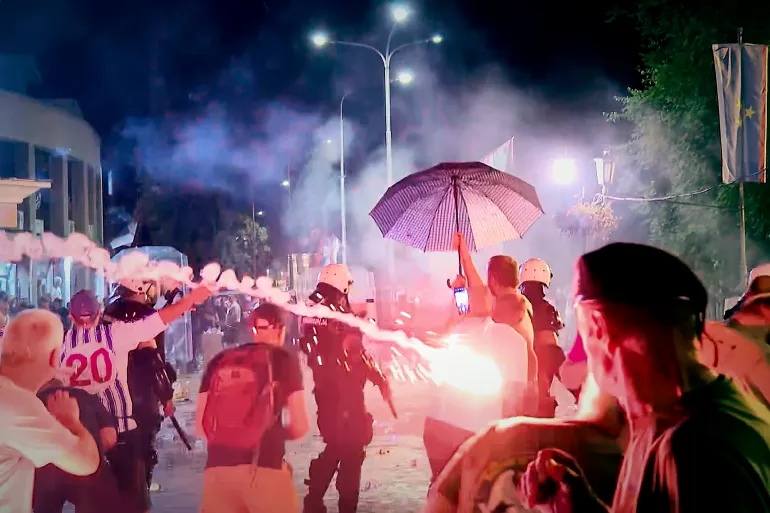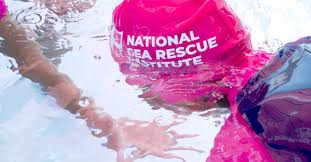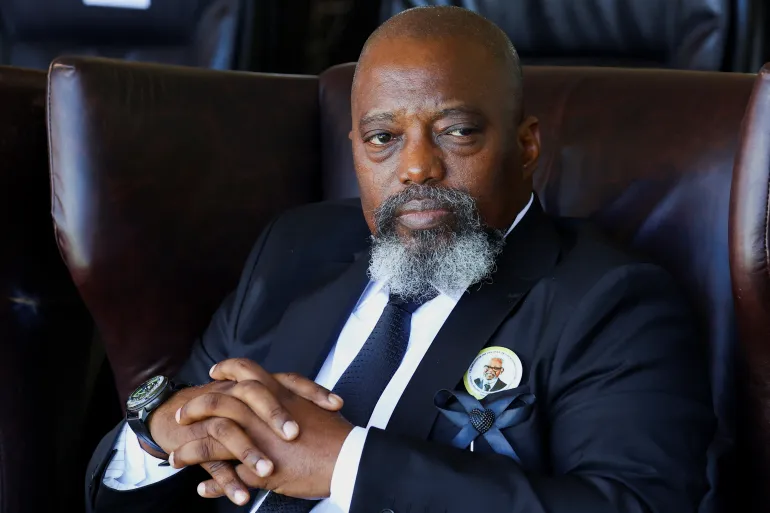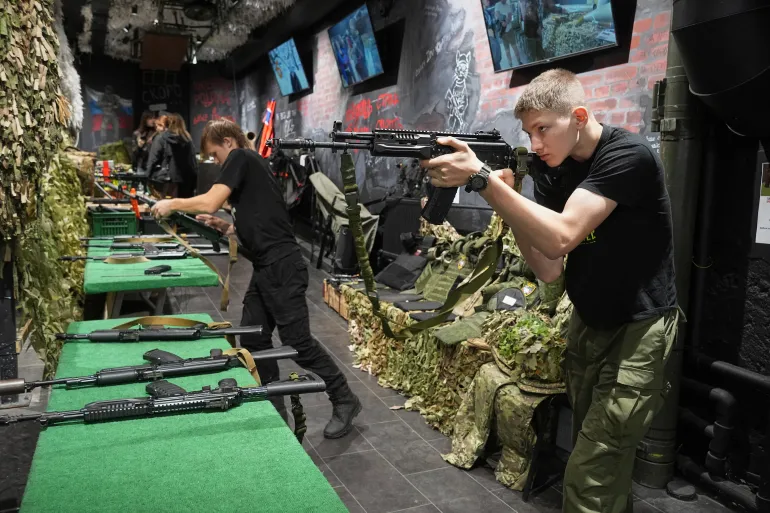Violent clashes between anti-government protesters and supporters of Serbian President Aleksandar Vučić have continued for a second straight day, escalating tensions after nearly ten months of ongoing demonstrations across the country.
The unrest began on Tuesday night in the town of Vrbas, northwest of the capital Belgrade, where rival groups gathered outside the offices of the ruling Serbian Progressive Party (SNS). Videos from the scene show fireworks, flares, rocks, and bottles being thrown between the two groups, forcing riot police to intervene and separate them.
Similar violent confrontations were reported in Novi Sad, Nis, Backa Palanka, Kraljevo, Cacak, Kragujevac, and the capital Belgrade, where police used tear gas to disperse crowds.
According to local media and officials, dozens of people were injured, including 16 police officers. Several individuals were arrested, especially in Vrbas, where authorities accused protesters of provoking violence. Protesters, however, claim that government supporters attacked first.
The protests, led mostly by university students and civil society groups, began in November 2024 after the collapse of a train station canopy in Novi Sad, which killed 16 people. The tragedy sparked accusations of deep-rooted corruption and negligence in government infrastructure projects.
Since then, the demonstrations have grown into a nationwide movement demanding:
Early parliamentary elections
Greater transparency and accountability
Protection of democratic freedoms
President Vučić has so far refused to call early elections, insisting that his government is stable and legitimate.
Interior Minister Ivica Dačić has called for a swift return to “law and order,” while President Vučić has referred to protesters as “thugs” and “terrorists” a term government-aligned media have echoed frequently.
At a press conference with Austrian Chancellor Christian Stocker, Vučić claimed that the protests had turned “very violent,” despite video evidence and eyewitnesses suggesting that most demonstrations have been largely peaceful for months.
In recent weeks, government supporters have started organizing counter-demonstrations, raising fears of civil unrest. Analysts warn that if the situation continues to escalate, Serbia’s bid for European Union membership may be jeopardized.
Although Serbia is formally pursuing EU accession, President Vučić has maintained strong ties with Russia and China, drawing criticism for undermining democratic institutions and limiting press freedom during his 13-year rule.
With hundreds of thousands of Serbians participating in protests since November, and the opposition calling for sustained pressure, the country appears headed for a prolonged political standoff unless a compromise is reached.
Many protesters say they will not stop until real reforms are made and democratic processes are



